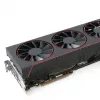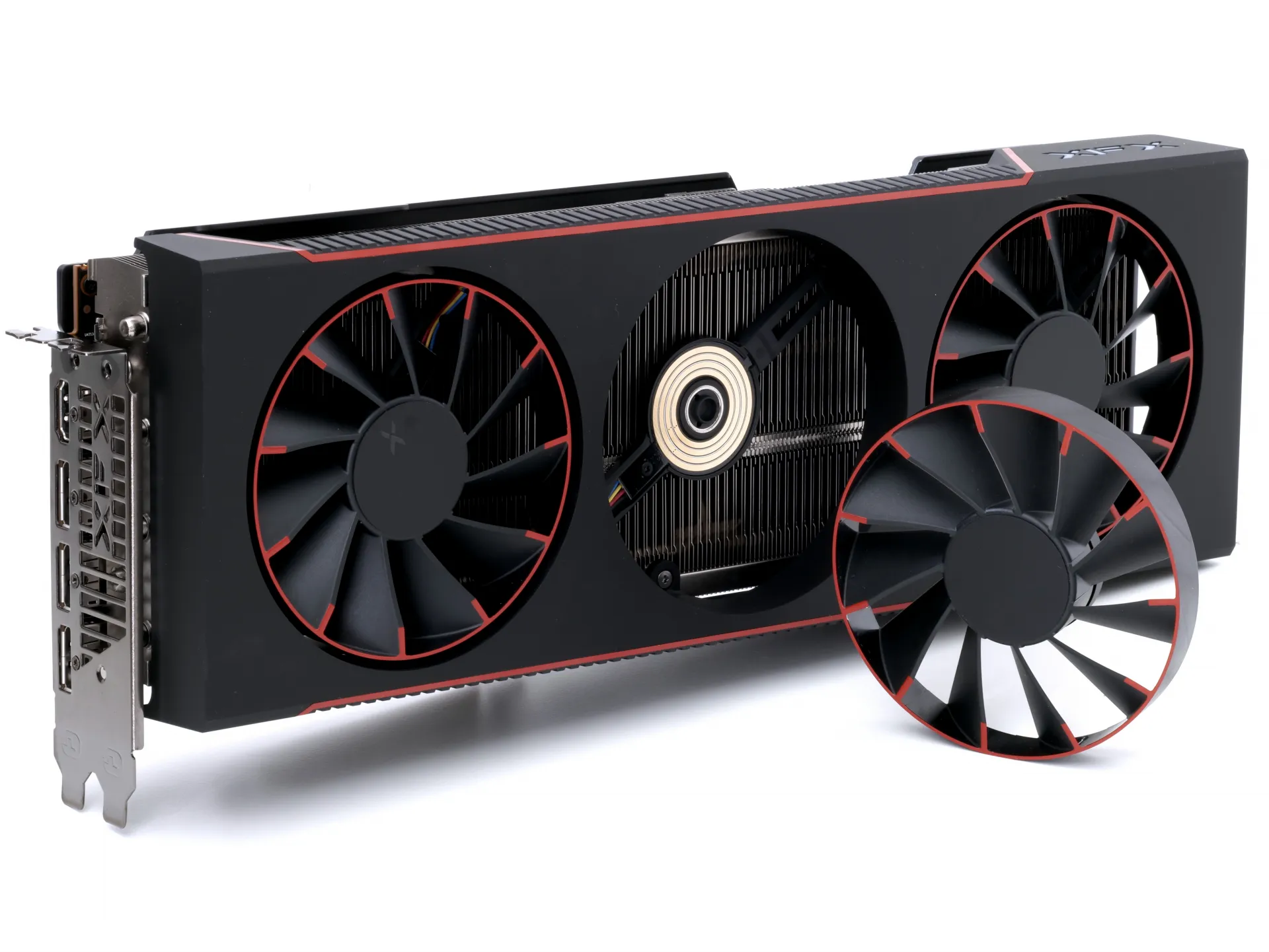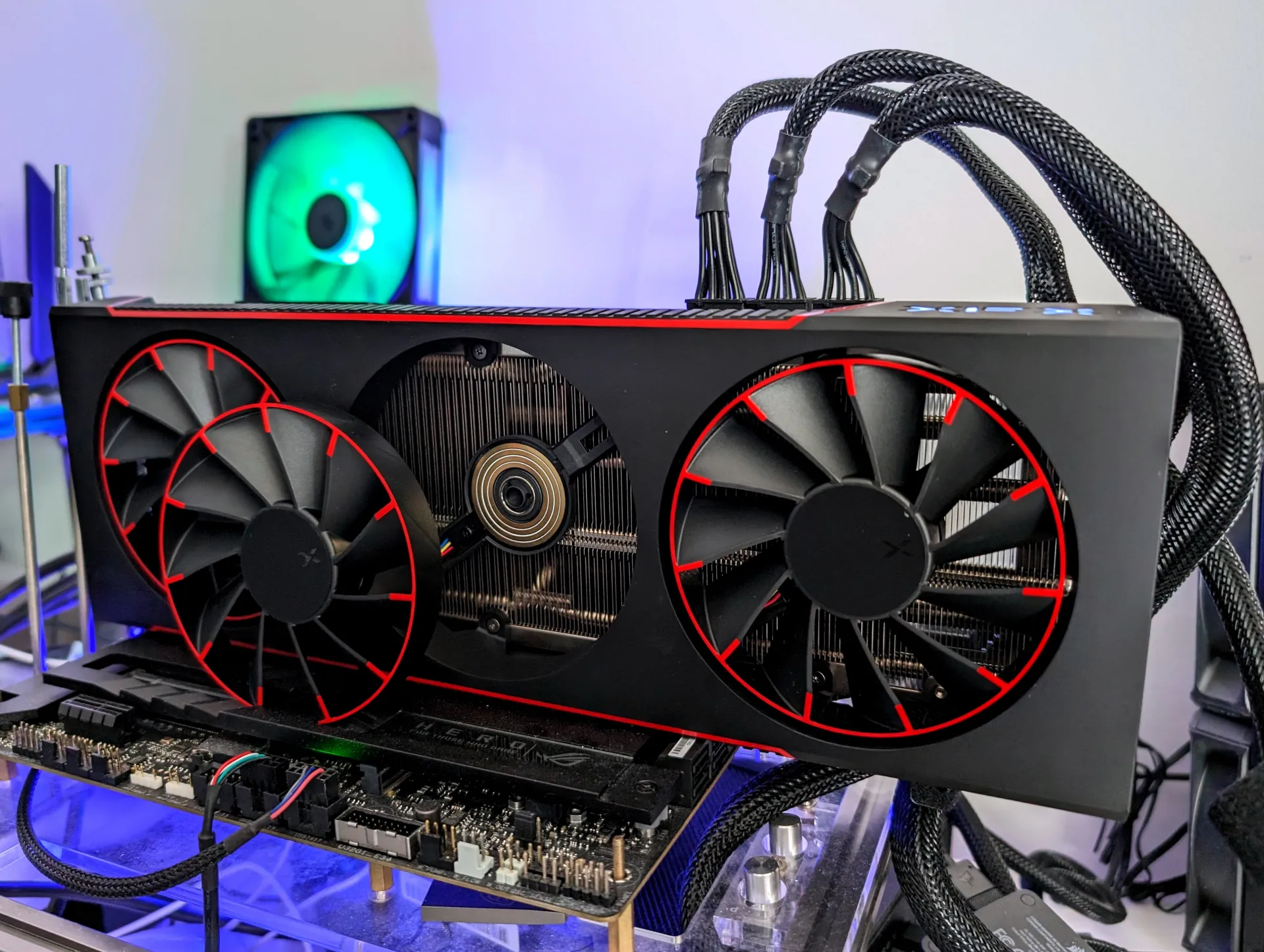Introduction
A Mercury Class Limited Edition - XFX introduced its powerful Radeon RX 7900 XTX Magnetic Air graphics card, featuring an innovative design with detachable, magnetically levitating fans. This latest model stands as the fastest in XFX's lineup, combining high performance with unique customization options. Right out of the box, the card is enhanced by the manufacturer to deliver optimal performance, showcasing not only its capability but also its striking appearance. This is ideal for users seeking a top-tier graphics solution that merges technology with stylish design. The XFX MagAir system offers a hassle-free solution for quickly swapping out fans on a graphics card, eliminating the need for tools or screws. This system utilizes powerful Neodymium Iron Boron (NdFeB) magnets, boasting a magnetic strength of 4000GS, strong enough to support weights up to 1kg. Impressively, these magnets maintain their strength over time, simplifying maintenance and servicing. The fans are designed for efficiency and performance. They feature 11 blades and can operate at speeds up to 3200 RPM. With a maximum airflow capacity of 70.08 cubic feet per minute (CFM) and an air pressure peak at 4.88 mmAq, they ensure effective cooling under high-performance demands.The cooling system is enhanced by a nickel-plated copper vapor chamber that serves both the GPU and DDR modules. This setup improves heat distribution and efficiency. Additionally, XFX strategically places thermal pads over all crucial components like GDDR, VRM, and the backside of the PCB. This design choice aids in managing heat dissipation effectively.A significant innovation is the use of Honeywell PTM7950 thermal interface material (TIM), which extends the period between maintenance needs due to its exceptional longevity and effectiveness. Furthermore, the incorporation of a two-phase vacuum heat transfer system marks a substantial upgrade over traditional cold plate methods, ensuring superior heat transfer capabilities. This advanced cooling technology, crafted from nickel-plated copper, underscores our commitment to providing robust and reliable thermal solutions for high-performance computing.
The Radeon RX 7900 XTX graphics card offers a significant upgrade over its predecessor, the RX 7900 XT, with XFX applying a robust three-connector 8-pin power setup compared to the latter’s two connectors. This series provides three DisplayPort connections and one HDMI. One aspect of the RX 7900 XTX is its secondary BIOS mode. Although officially unsupported by XFX, savvy users can manually adjust settings to enhance the card’s performance by up to 8% over the standard configuration. Details on how to achieve this will be explored further in our tweaking guide. The heart of the RX 7900 XTX is AMD’s latest rDNA3 GPU architecture. This card is equipped with a substantial 24 GB of GDDR6 graphics memory. When compared with Nvidia’s GeForce RTX 4080 and SUPER, the RX 7900 XTX competes admirably, offering the same amount of memory as the more expensive RTX 4090 but at a lower price point. However, while the memory capacity is impressive, the RX 7900 XTX utilizes the slower GDDR6 variant, as opposed to the faster memory types found in some competitors' models. The RX 7900 XTX benefits from a vast 384-bit memory bus and additional bandwidth provided by an infinity cache, which helps mitigate some of the speed disadvantages of its memory type.
| Radeon RX 7900 XTX | Radeon RX 7900 XT | |
|---|---|---|
| Architecture | 5nm RDNA3 | 5nm RDNA3 |
| GPU | Navi 31 XTX | Navi 31 XT |
| Shader Processors | 12288/6144SP | 10752/5376SP |
| Memory | 24GB G6 | 20GB G6 |
| Memory Bus | 384-bit | 320-bit |
| Memory Speed | 20 Gbps | 20 Gbps |
| Infinity Cache | 96 MB | 80 MB |
| Bandwidth | 960 GB/s | 800 GB/s |
| TBP | 355W | 300W |
| Price | $999 | $899 |
AMD promotes game clock of 2.3GHz for the RX 7900 XTX, which is the speed at which you can anticipate the card to operate at while actually playing games. However, XFX defaults that value towards 2455 MHz, with 2615MHz for the boost clock. The default BIOS is set to provide an extra ~36W over reference cards. The default TGP here is 339W, with 15% more available. Full digital PWM power (15+2) and three 8-pin PCIE-E connectors allow for more GPU power delivery. Cooling sees a return of a vapor chamber; when compared to a cold plate alone, phase vacuum heat transfer significantly boosted heat transmission. Nickel-plated copper construction. Both GPU and DDR modules use the nickel-plated copper vapour chamber. XFX employs extensive thermal pad placement throughout all GDDR, VRM, and other essential components, including the PCB's backside (a total of 20 thermal pads). Join us in the might of the XFX XTX review.



